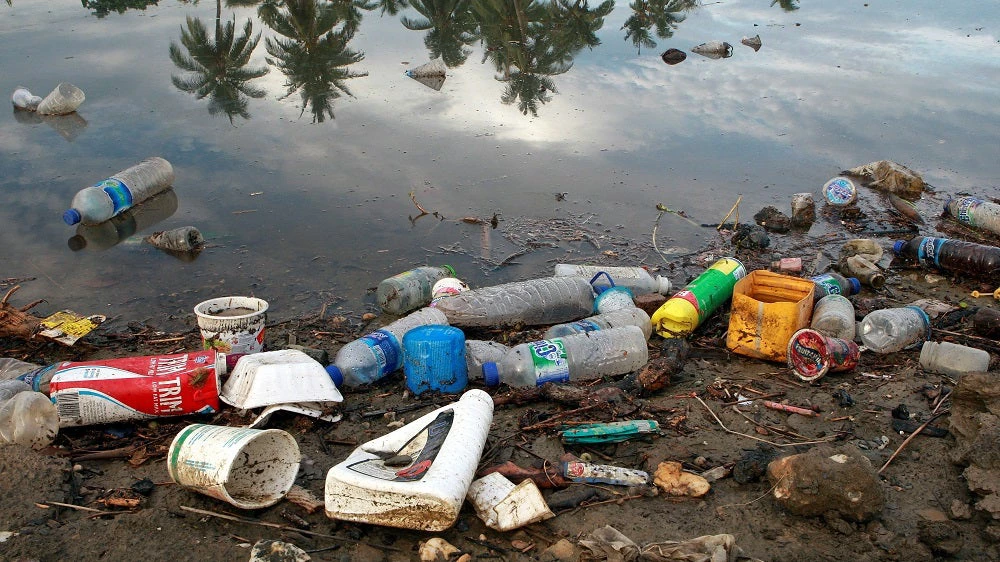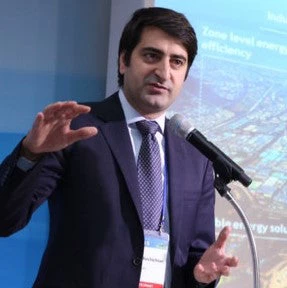 Image of trash next to water
Image of trash next to water
Our global economy relies on deeply intertwined supply chains, sustained by more than 100 billion tons of raw materials entering the system each year. It has been unsustainable for decades, and in just a few months since the coronavirus (COVID-19) outbreak began, it’s become clear that it is dangerously fragile as well. It’s high time to embrace a fundamental change.
One of the more comprehensive solutions to improve resilience is the circular economy. Because it’s based on the principles of designing out waste and pollution, keeping products and materials in use, and regenerating natural systems, the circular economy can help us meet the Sustainable Development Goals. Implementing it would also promote water and nutrient security as well as security or resiliency in materials, while mitigating what experts believe to be this century’s biggest global threat to health: climate change.
The circular economy is not an abstract concept. Its principles are being applied today to help us cope with the pandemic. Manufacturing and supply-chain shortages within the health sector have, for example, driven circular innovation. We already see results in the use of sterilization agents to decontaminate N95 masks and give them a second life as well as spurred fabrication laboratories (fab labs) that are banding together to innovate prototype designs and processes for medical use.
Beyond the health sector, responsible packaging firms continue to innovate on sustainable and recyclable consumer goods, despite the rise in single-use plastic packaging as a result of quarantine-related home deliveries and fears associated with reused materials. The food and beverage sector, for its part, is working with organizations to redirect surplus food to those most in need.
These examples are undoubtedly small and targeted, yet they represent a broader recognition of circularity’s value, both during and immediately following this crisis. Amsterdam, for example, has become the first municipality to adopt the Doughnut Economics model and the Circular 2020-2025 strategy as the basis for its recovery from COVID-19. The new model and strategy concretely aim to cut food waste by 50 percent by 2030, implement strict sustainability requirements in construction tenders, and reduce the use of new raw materials by 20 percent, also by 2030.
Similarly, the European Union and South Korea have both adopted Green Deals as central pillars to their economic recoveries, both leveraging regenerative models and circular economy principles. Circularity can be practiced at all levels now and in the future, from disinfecting face masks that save lives, to deploying SMART regional policies and strategies that maximize resource use, decrease pollution, and create countless business opportunities.
Merging the circular economy with COVID-19 response
In the long-term, the answer is clear: resilience, decarbonization, and a sustainable growth trajectory must be part of our post-pandemic reality. In a recent academic paper that reviewed numerous stimulus packages since the financial crisis, those linked with green projects generated greater results than traditional packages. Considering the level of financing needed to recover from this crisis—coupled with the growing number of governments and sectors already committed to greening their industries via their Nationally Determined Contributions and related reforms for climate mitigation and adaptation—it’s reasonable to assume that any COVID-19 stimulus should also further countries’ progress toward their medium- to long-term development goals. Some governments have enacted their stimulus packages already, while others are putting them together.
- Collaboration: A circular economy promotes added value and resilience along the supply chain by involving a larger-than-usual set of actors. Stimulating a sustainable economic recovery to the current crisis is no different. In Bangladesh, for example, development partners, key textile sector business associations, and government representatives have jointly built a platform to assess and react to the needs of the country’s ready-made garment sector. In municipal, national, or regional circular initiatives, the public sector’s role is critical in leveraging the convening power and decision-making necessary to effectively develop a path forward. As this relates to the climate agenda, the World Bank Group has developed global principles for climate dialogue that underpin the scale of collaboration applicable to the COVID-19 response as well as innovative circular economy business models.
- Proactive recovery financing: Governments will likely continue to roll out stimulus and financial support packages for industries and small and medium-sized enterprises. More than 150 policy and/or financing responses have already been developed for industries, according to World Bank Group estimates. Some of them build on previously agreed green or circular policy goals. Even countries that don't have an advanced climate agenda can use this opportunity to integrate resilience thinking into their recoveries beyond short-term debt financing and tax exemptions.
- Accelerated digitalization: COVID-19 has forced the private sector to quickly embrace a new business model to accommodate social distancing and shuttered office spaces. Digital solutions have promoted virtual workspaces, mobile government, and a multitude of platforms to monitor and trace infections. Digitalization isn’t limited to medical solutions or work-from-home setups, though. It also plays a critical role as an enabler of the circular economy, by helping businesses close loops, implement more efficient processes, minimize waste, promote longer lives for products, and lower their transaction costs.
Governments are working tirelessly to mitigate a health emergency that no one was prepared for. As they plan for their countries’ economic recoveries in the coming months, we can only hope that they’ll integrate some of the more important lessons that COVID-19 has already taught us—recognizing how similar this crisis is, in fact, to the climate crisis, and that smart fiscal recovery packages can simultaneously deliver on both economic and climate goals. Those who don’t will squander a clear opportunity to build much-needed resilience into their economies and ecosystems.



Join the Conversation